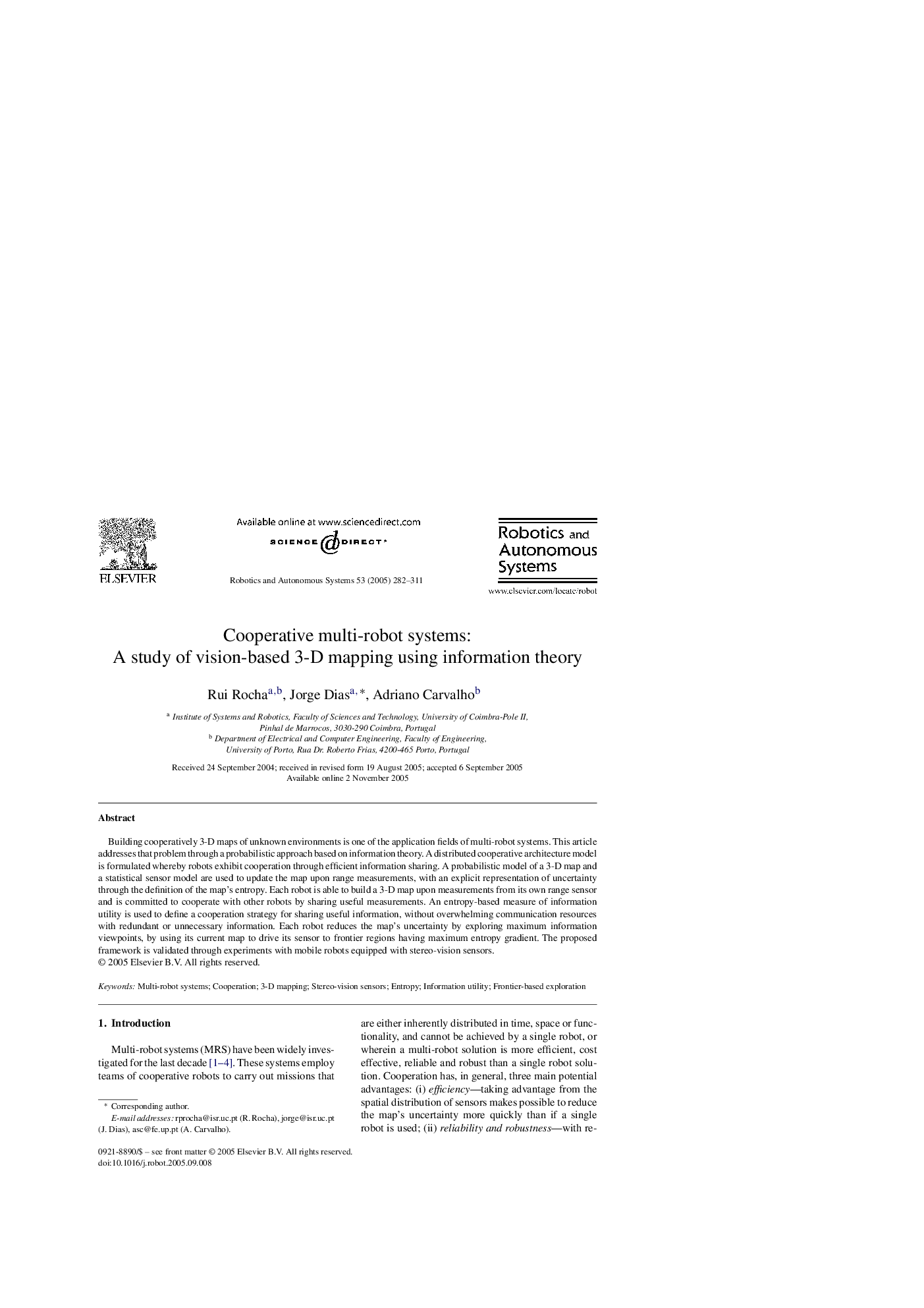| Article ID | Journal | Published Year | Pages | File Type |
|---|---|---|---|---|
| 9654533 | Robotics and Autonomous Systems | 2005 | 30 Pages |
Abstract
Building cooperatively 3-D maps of unknown environments is one of the application fields of multi-robot systems. This article addresses that problem through a probabilistic approach based on information theory. A distributed cooperative architecture model is formulated whereby robots exhibit cooperation through efficient information sharing. A probabilistic model of a 3-D map and a statistical sensor model are used to update the map upon range measurements, with an explicit representation of uncertainty through the definition of the map's entropy. Each robot is able to build a 3-D map upon measurements from its own range sensor and is committed to cooperate with other robots by sharing useful measurements. An entropy-based measure of information utility is used to define a cooperation strategy for sharing useful information, without overwhelming communication resources with redundant or unnecessary information. Each robot reduces the map's uncertainty by exploring maximum information viewpoints, by using its current map to drive its sensor to frontier regions having maximum entropy gradient. The proposed framework is validated through experiments with mobile robots equipped with stereo-vision sensors.
Related Topics
Physical Sciences and Engineering
Computer Science
Artificial Intelligence
Authors
Rui Rocha, Jorge Dias, Adriano Carvalho,
